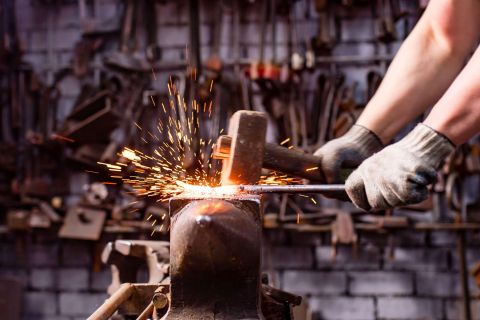In accordance with the EU's implementation of the Personal Data Protection Act, we are committed to safeguarding your personal information and providing you control over it. We have updated and will regularly update our Privacy Policy to comply with this personal data protection law. Please refer to our latest Privacy Statement.
This website uses cookies to enhance your browsing experience. To learn more about how this website uses cookies, please click here.
Latest News
30.Sep.2025
Material Knowledge
Stronger Steel Through the Right Direction - Hung Shuh Stands with You
The rolling direction of steel, often called the grain flow, plays a crucial role in determining product performance.
High-carbon steel, with a carbon content typically above 0.6%, is known for its excellent hardness, wear resistance, and tensile strength. It is widely used in tools, springs, hardware, electronic parts, and various mechanical components that demand both strength and durability.
After rolling, however, the internal grains of the steel align along the rolling direction, creating a distinct “grain flow effect.”
This structural orientation greatly influences both processing and product performance.
Generally, the mechanical properties are stronger along the grain direction than across it, particularly in terms of tensile strength and ductility. When the main stress direction of a product follows the grain, its fatigue life and impact resistance are improved. Conversely, if the load is applied perpendicular to the grain without proper design consideration, cracks, brittle fractures, or fatigue failure may occur especially at stress-concentrated areas such as cutting edges or bent sections.
Grain flow also affects processability.
Because of its high hardness, high-carbon steel is more sensitive during bending, stamping, or forming.
If processing runs against the grain, cracking, poor formability, or reduced product yield can result.
After heat treatment, misaligned grain flow and stress distribution may further cause warping, uneven hardening,
or even surface cracking.
Controlling grain flow ensures every product’s durability.
That is why it is essential to clearly indicate grain directionduring the design stage,
and to align it properly throughout bending, heat treatment, and assembly.
This is the key to maximizing material performance and ensuring product stability and safety.
Every grain direction defines a path of quality. Understanding it is the way to forge excellence.
Other
03
Nov.2025
Material Knowledge
Hardness Conversion Table
28
Jul.2025
Material Knowledge
Introduction to Carbon Steel: Composition and Applications
28
Jul.2025
Material Knowledge



